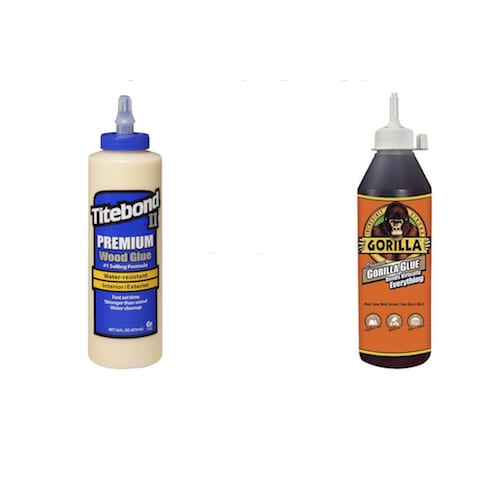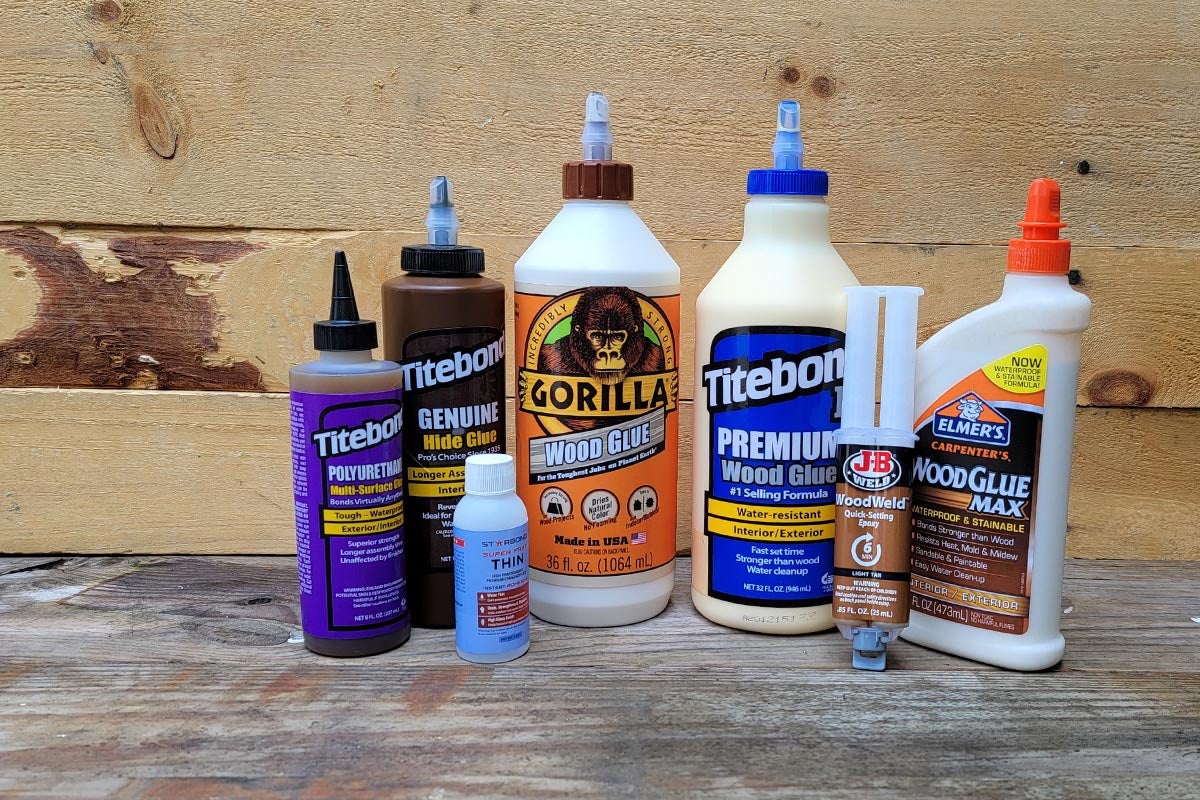Why does wood glue work so well? Well, you might be surprised by the science behind it! Wood glue is like a superhero that swoops in to save the day when it comes to joining pieces of wood together. But have you ever wondered what makes it so effective? In this article, we’re going to dive deep into the fascinating world of wood glue and uncover the secrets that make it such a powerful bonding agent.
When it comes to woodworking projects, having a strong and reliable bond is crucial. That’s where wood glue comes in. It’s specifically designed to create a powerful bond between pieces of wood, making sure they stick together for the long haul. But how does it work its magic?
To understand why wood glue is so effective, we need to take a look at its main ingredient: polyvinyl acetate, also known as PVA. This unique compound acts as the glue’s backbone, creating a strong and durable bond when it dries. But that’s not all – there’s a lot more to explore in the world of wood glue!
So, if you’re curious to learn more about the secrets of wood glue and how it can make your woodworking projects stand the test of time, grab your safety goggles and join us on this adhesive adventure! Get ready to uncover the hidden wonders of wood glue and become a true expert in the art of sticking wood together. Let’s dive in!

Understanding the Science Behind the Impressive Performance of Wood Glue
Wood glue is a staple in the woodworking industry, known for its exceptional bonding capabilities. But have you ever wondered why wood glue works so well? In this article, we will delve into the science behind this remarkable adhesive and explore its unique properties that make it the go-to choice for woodworkers worldwide.
The Chemistry Behind Wood Glue
Wood glue, also known as carpenter’s glue or PVA glue (polyvinyl acetate), is a synthetic adhesive that is specifically formulated for bonding wood. Its impressive bonding strength can be attributed to its unique chemical composition. PVA glue contains long chains of polymer molecules that interweave and crosslink when exposed to air, forming a tough and durable adhesive.
When wood glue is applied to a wooden surface, it spreads and seeps into the wood’s pores, making intimate contact with the fibers. As the glue dries, the water content evaporates, causing the PVA molecules to contract and form strong bonds with the wood. These bonds are further enhanced by intermolecular forces, such as hydrogen bonding, which adds to the overall strength and durability of the adhesive.
The Importance of Wood’s Porous Structure
One of the key factors that contribute to the effectiveness of wood glue is the porous nature of wood itself. Wood is composed of tiny channels called capillaries that absorb and hold moisture. When wood glue is applied, it penetrates these capillaries, creating a mechanical bond that adds to the adhesive strength.
Additionally, the porous structure of wood creates a larger surface area for the glue to adhere to, allowing for a stronger bond. This is especially crucial in woodworking applications where a secure and long-lasting bond is necessary to withstand the forces and stress the wood may be subjected to.
Factors Affecting the Performance of Wood Glue
While wood glue is widely recognized for its impressive bonding capabilities, several factors can influence its performance. Temperature and humidity play a crucial role in the drying process of wood glue. Higher temperatures may speed up the drying time, while excessive humidity can prolong it. It is essential to follow the manufacturer’s recommendations regarding temperature and humidity levels to ensure optimal bonding results.
Surface preparation is another critical factor that can affect the performance of wood glue. Proper sanding and cleaning of the wood surface are essential to remove any contaminants or rough spots that could hinder the adhesive’s ability to bond effectively. By ensuring a clean and smooth surface, you maximize the adhesive surface area and promote a stronger bond.
Common Types of Wood Glue
Not all wood glues are created equal, and different types are designed for specific applications. Here are some commonly used wood glues in the woodworking industry:
1.
PVA Glue:
The most common type of wood glue, PVA glue, is versatile, easy to use, and perfect for general woodworking projects. It is available in both the yellow and white varieties, with the yellow version providing a slightly stronger bond.
2.
Hide Glue:
Derived from animal collagen, hide glue has been used for centuries and offers excellent bonding strength. It is reversible, meaning it can be softened with heat and moisture, making it ideal for furniture repairs.
3.
Epoxy:
Known for its exceptional strength and resistance to water, epoxy is an excellent choice for bonding wood that will be exposed to external elements or submerged in water.
4.
Cyanoacrylate Glue (Super Glue):
While not specifically formulated for wood, cyanoacrylate glue can bond wood effectively, especially for small repairs or intricate woodworking projects.
Tips for Using Wood Glue Effectively
To ensure optimal bonding results with wood glue, here are some tips to consider:
1. Always follow the manufacturer’s instructions and recommended drying times for the specific wood glue you are using.
2. Apply the glue evenly and sparingly, as excess glue can interfere with the bond and cause messy drips.
3. Use clamps or other methods to hold the wood in place while the glue dries to prevent movement that can weaken the bond.
4. Allow ample drying time before subjecting the glued pieces to stress or pressure.
5. Store wood glue in a cool, dry place, as exposure to extreme temperatures or moisture can affect its performance.
In Conclusion
Wood glue’s exceptional bonding capabilities can be attributed to its unique chemical composition, the porous structure of wood, and proper surface preparation. By understanding the science behind wood glue, you can harness its full potential and achieve strong, durable bonds in your woodworking projects. Follow the tips mentioned above to ensure maximum effectiveness and enjoy the benefits of this remarkable adhesive. Happy woodworking!
Key Takeaways: Why Does Wood Glue Work So Well?
- Wood glue works well because it forms a strong bond between wood surfaces.
- Wood glue contains chemicals that react with moisture in the wood to create a strong adhesive.
- Wood glue penetrates the porous surface of the wood, improving the bond strength.
- Wood glue dries clear, making it ideal for transparent or stained wood projects.
- Wood glue is easy to apply and clean up, making it convenient for woodworking projects.
Frequently Asked Questions
In this section, we will explore some common questions about why wood glue works so effectively. If you’ve ever wondered about the magic behind the bond, keep reading for some insightful answers!
How does wood glue actually work?
Wood glue is specifically designed to create a strong bond between pieces of wood. The glue contains a substance called polyvinyl acetate (PVA), which is the key to its effectiveness. When the wood glue is applied to the surface of the wood, the PVA interacts with the moisture in the wood and undergoes a process known as polymerization. This process causes the individual molecules in the glue to link together, forming a strong and durable bond between the pieces of wood.
Additionally, wood glue works by penetrating the pores of the wood, effectively seeping into the surface and creating an adhesive connection. This ensures that the bond is not only surface-level, but also extends deeper into the wood, resulting in a stronger joint overall.
Why is wood glue considered so strong?
Wood glue is known for its exceptional strength due to a few reasons. First and foremost, the polymerization process mentioned earlier creates a chemical bond that is incredibly strong. As the PVA molecules link together, they effectively create a network of chains that interlock, providing strength and durability to the bond.
Furthermore, the ability of wood glue to penetrate the wood surface plays a significant role in its strength. The glue seeps into the pores of the wood, making the bond more resistant to shear and peel forces. This penetration, combined with the chemical bond formed during polymerization, results in a bond that is difficult to break and can withstand the pressures and stresses that wood is subjected to.
Does wood glue work on all types of wood?
Wood glue is designed to work on a wide range of wood types, including hardwoods and softwoods. Whether you’re working with oak, pine, maple, or any other kind of wood, you can rely on wood glue to create a strong bond. However, it’s essential to ensure that the wood surfaces are clean, dry, and free from any finishes or contaminants that may interfere with the glue’s effectiveness.
Additionally, for certain types of wood that are especially oily or resinous, it may be useful to prime the surfaces or use a specialized wood glue that is specifically formulated to overcome these challenges. These types of wood glue are often marketed as “oily wood glue” or “resin-resistant wood glue” and can provide better adhesion for tricky wood species.
Is wood glue waterproof?
The majority of wood glue on the market is not entirely waterproof. Standard wood glue is water-resistant, meaning it can withstand some level of exposure to moisture without compromising its bond strength. For example, if your glued wood project gets a little wet, it should still hold together fine. However, prolonged exposure to water or submerging the glue joint may cause the bond to weaken.
If you require a waterproof bond, special waterproof or water-resistant wood glues are available. These glues are specifically formulated to repel water, ensuring that the bond remains strong even when exposed to moisture. It’s important to carefully read the labels and select the appropriate type of wood glue for your specific project to achieve the desired level of water resistance.
How long does wood glue take to dry and cure?
The drying and curing time of wood glue can vary depending on various factors such as temperature, humidity, and the specific type of glue used. In general, wood glue dries relatively quickly and forms a strong initial bond within 30 minutes to an hour of application. However, it’s important to note that this initial bond is not fully cured or at its maximum strength.
To achieve the full strength and durability of the wood glue bond, it is typically recommended to allow it to cure overnight or for at least 24 hours. During this curing period, the glue hardens and fully sets, resulting in a bond that can withstand a considerable amount of stress. It’s important to follow the instructions provided by the manufacturer of the wood glue you are using, as specific drying and curing times may vary.

Does wood glue really work?
Summary
Wood glue works so well because it creates a strong bond between the pieces of wood. The glue seeps into the porous surface of the wood, making it stick together tightly. It dries to form a hard and durable connection that can withstand pressure and movement. Wood glue is also moisture-resistant, which helps it hold up well over time.
Another reason wood glue is so effective is that it is designed to chemically react and bond with the wood fibers. This reaction creates a strong adhesive force that keeps the pieces of wood firmly together. Wood glue is easy to use, non-toxic, and dries clear, making it a great choice for all kinds of woodworking projects. So, next time you’re working with wood, remember to reach for that trusty wood glue.
